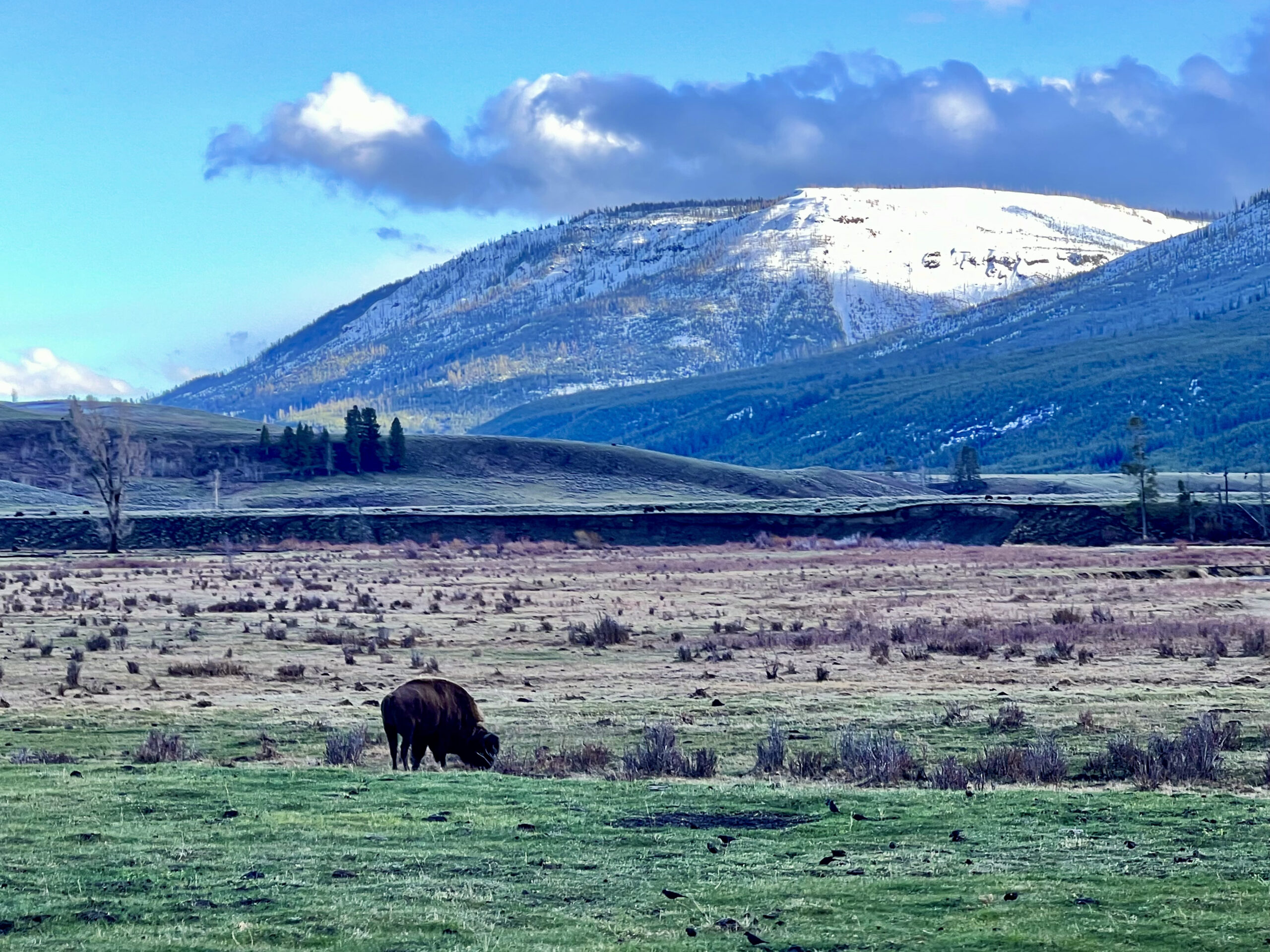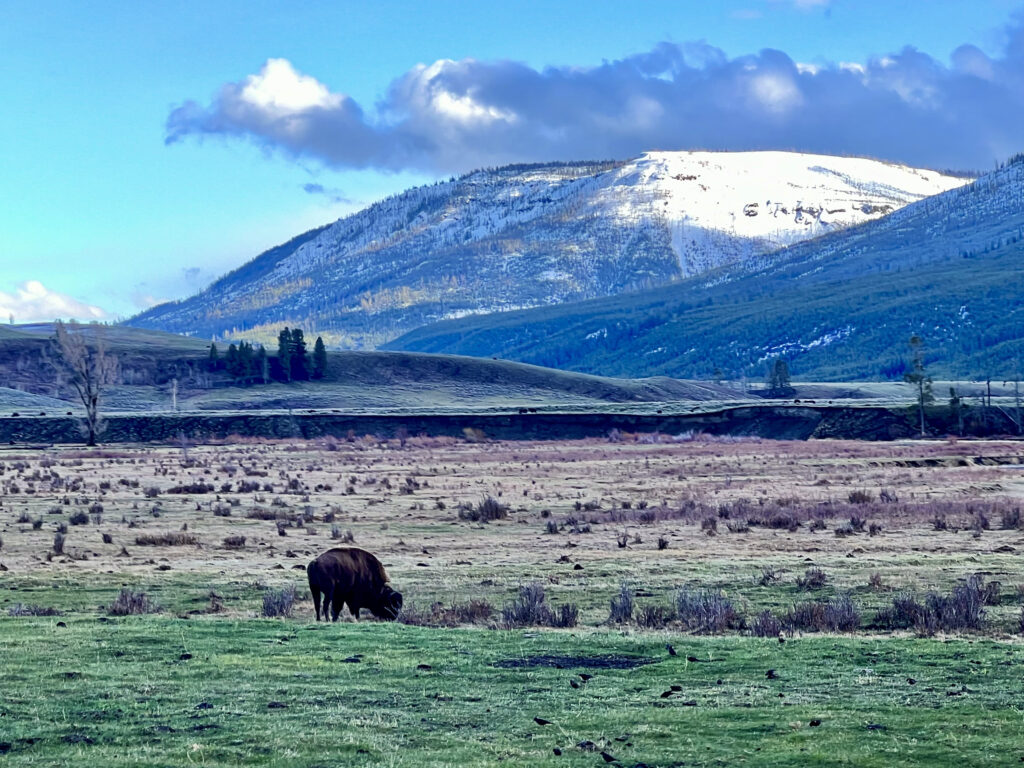
Hey, everyone! If you’re like me, you’ve probably dreamed of visiting Yellowstone National Park at least once in your life. It’s a place filled with natural wonders, from erupting geysers like Old Faithful to stunning landscapes like the Grand Canyon of the Yellowstone. But guess what? Not all seasons are created equal when it comes to exploring this amazing park! That’s why I’ve put together this guide to help you figure out the best time of year to visit Yellowstone. We’ll dive into each season and see what makes it special, so you can plan the perfect trip!
Why Timing Matters
You might be thinking, “It’s a national park; isn’t it awesome all year round?” Well, yes and no. Yellowstone offers different types of fun depending on when you go. Here’s why timing matters:
- Different Experiences: In the summer, you might be hiking under the bright sun, but in the winter, you could be snowmobiling through a winter wonderland. Each season offers unique activities and sights.
- Wildlife Watching: Animals in Yellowstone have their own routines. Some critters might be easier to spot in the spring, while others come out more during the fall. And then many disappear some seasons altogether!
- Crowd Control: Summer is super popular, which is great for meeting other nature lovers but not so great if you’re hoping for some solitude. On the other hand, winter is far less crowded, offering a more peaceful experience.
In the sections to come, we’ll go through each season—Spring, Summer, Fall, and Winter—to give you the lowdown on what you can expect. Whether you’re an adventure junkie, a wildlife enthusiast, or someone who just wants to take in the beauty, this guide will help you decide when to pack your bags for Yellowstone!
Spring in Yellowstone
Spring is a season of rebirth and new beginnings, and that’s definitely true for Yellowstone National Park. As the snow starts to melt away, the park begins to wake up from its long winter slumber. But before we get too excited, let’s dive into what makes spring in Yellowstone unique.
Weather and What to Expect
Spring in Yellowstone can be a mixed bag. While it starts to warm up, don’t pack away your winter clothes just yet! You might still run into some chilly days and even snow in certain areas. It’s best to prepare for a variety of conditions by dressing in layers. When I went in May 2022 we had a great first day of gray clouds over green grass then woke up the next morning to a heavy snowfall the night before with at least a foot of snow on the ground in Mammoth. I had to switch from t-shirts to my winter gear. However as we traveled south and went to see Old Faithful it was sunny and had warmed up with very little snow on the ground. So the road conditions in the park can vary as well and some were closed that morning due to ice on the roads.

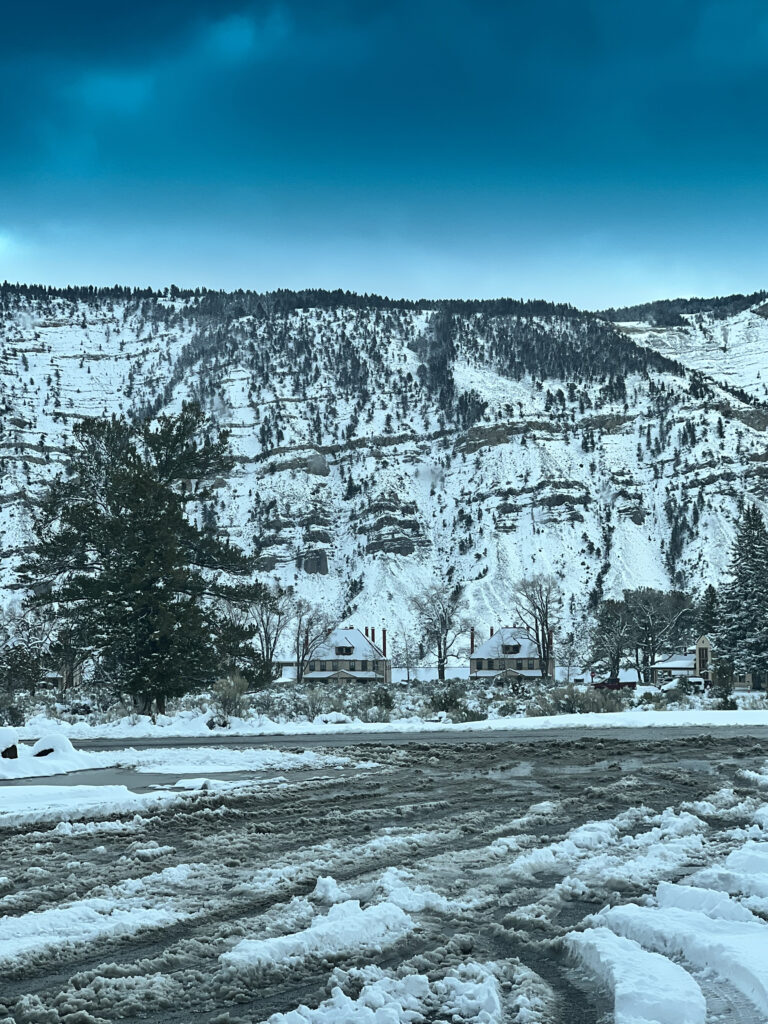
Activities
Spring is a fantastic time for bird-watching! As birds return from their winter migration, you’ll have a chance to see species that aren’t around at other times of the year. Hiking is also great in the spring, especially in the lower elevations where the snow has melted. Just be sure to check trail conditions before you set out, as some might still be closed, snow-covered or muddy.
Wildlife
Spring is baby animal season! If you’re lucky, you might get to see baby bison, elk calves, and even bear cubs. This is also when many animals are most active, making it easier to spot them during your visit. Just remember to keep a safe distance; mama animals are very protective of their young.
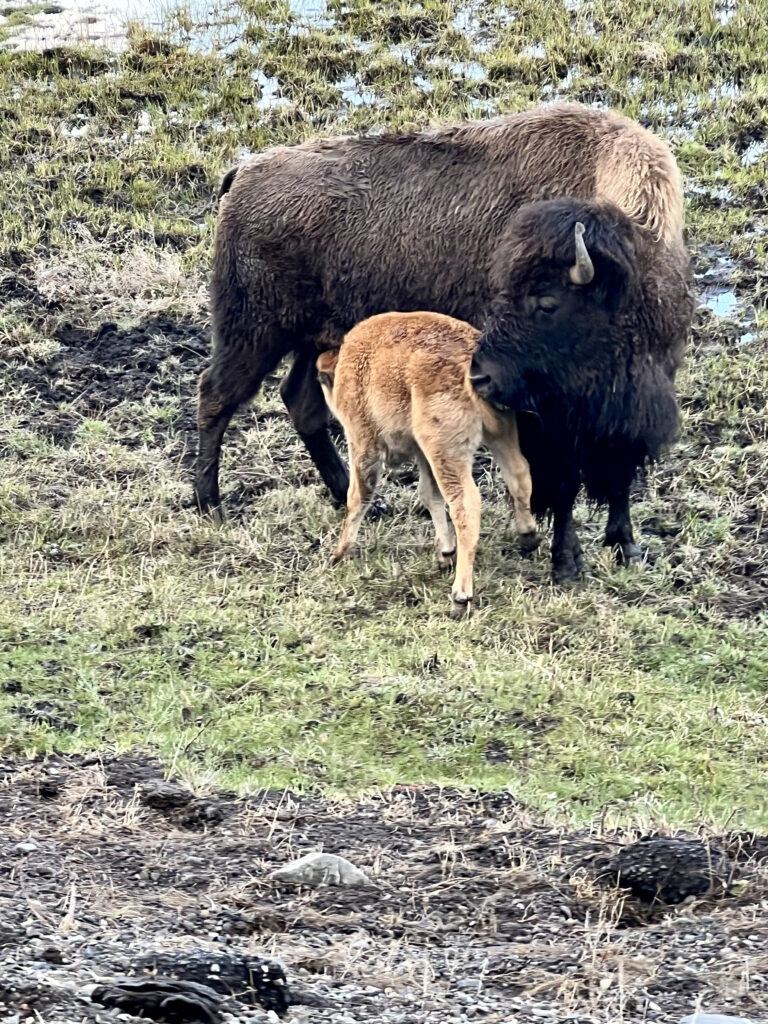
Pros and Cons
Pros
- Fewer crowds than summer, giving you a more peaceful experience.
- Newborn animals are a big draw.
- Great for bird-watching and less strenuous hikes.
Cons
- Some higher-elevation areas and trails may still be closed due to snow.
- Unpredictable weather can make it hard to plan your day.
- Limited park services; some visitor centers and campgrounds might still be closed.
Spring in Yellowstone is like a sneak peek at what the rest of the year has to offer. The park isn’t as crowded as in the summer, and you get to see it slowly come to life. From bird-watching to spotting baby animals, spring offers a unique Yellowstone experience you won’t want to miss. Just be prepared for a bit of everything when it comes to weather!
Summer in Yellowstone
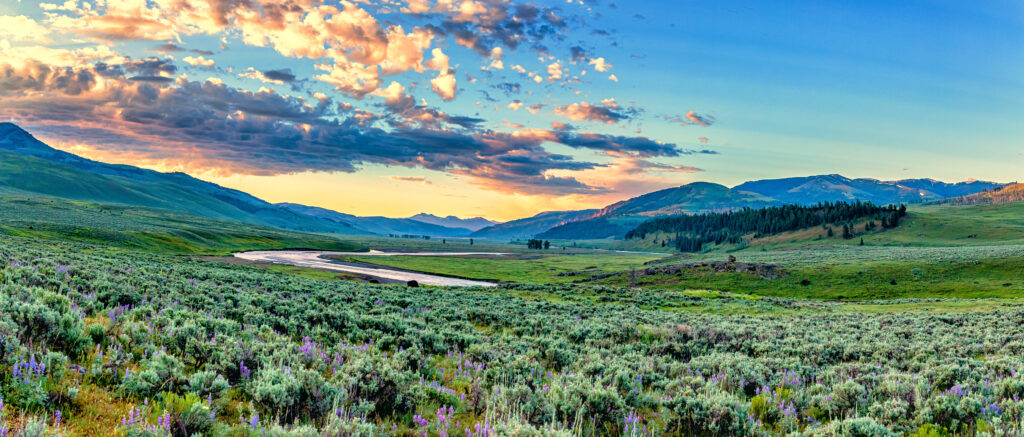
Ah, summer—the season that turns Yellowstone into a bustling hub of activity! As the sun shines brighter and the days get longer, the park becomes a playground for nature lovers. For me these are some of the best months of the year in Yellowstone. But what exactly can you expect during a summer season visit to this iconic national park? Let’s find out!
Weather and What to Expect
Summer in Yellowstone generally has warmer temperatures and sunny, but it’s always a good idea to be prepared for sudden weather changes. Afternoon thunderstorms are common, so packing a raincoat is a smart move. Daytime temperatures can range from the 70s to the 80s Fahrenheit, but nights can still be cool, so don’t forget some warm layers.
Activities
Summer is the prime time for outdoor adventures! Whether you’re into hiking, fishing, or camping, this season has it all. The trails are open, the lakes are fish-ready, and the campgrounds are bustling with activity. And don’t forget about guided tours and ranger programs, which are in full swing during the summer months.
Wildlife
While many animals are less active during the daytime to avoid the heat, early morning and late evening are great times for wildlife watching. You might see bison grazing in the meadows, elk roaming about, and if you’re lucky, even a wolf or a bear in the distance. Some of the animals move up to higher elevations in the summer to escape the heat.
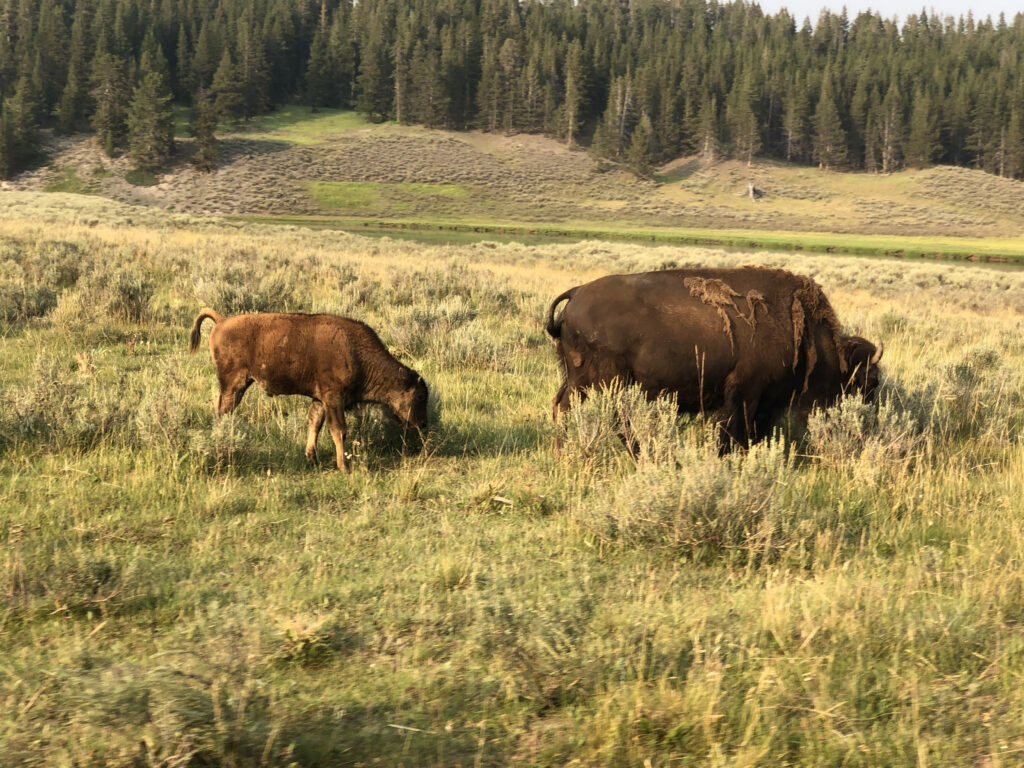
Pros and Cons
Pros
- All park facilities, including visitor centers and campgrounds, are open.
- Wide range of activities available, from hiking to boating.
- Long days mean more time to explore.
Cons
- It’s the most popular season with the highest visitor numbers, so expect crowds at the most popular attractions.
- Wildlife sightings can vary since some animals are less visible during the hot daytime hours.
- Lodging and campgrounds can book up months in advance.
Summer in Yellowstone offers the full package: warm weather, open trails, and a ton of activities. It’s the best time for a family vacation filled with outdoor fun, but it’s also the busiest season, so plan ahead. Whether you’re an adventure junkie or just looking to relax in nature, summer in Yellowstone is sure to provide a memorable experience. Just don’t forget to make your reservations early and be ready for some company!
Fall in Yellowstone
As the leaves begin to change and the air turns crisp, Yellowstone takes on a whole new vibe. Fall is a magical time to visit, offering a peaceful yet vibrant experience you won’t find in the bustling summer months or the quiet of winter. Let’s dive into what makes fall in Yellowstone a season you won’t want to miss.
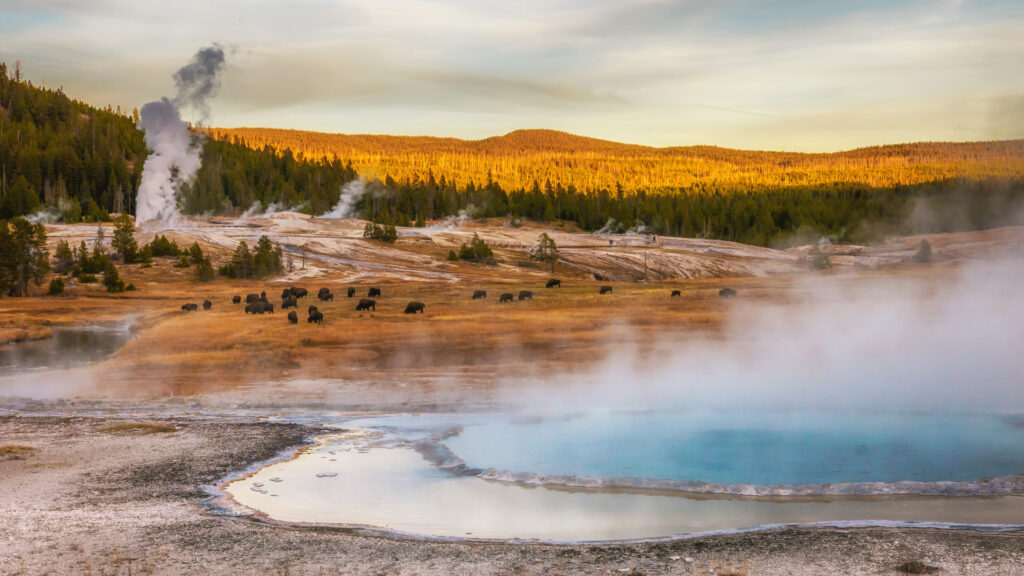
Weather and What to Expect
Fall weather in Yellowstone can be a bit unpredictable. Early fall might still feel like an extension of summer, with mild temperatures and sunny skies. But as you move into October and November, be prepared for colder weather and even some early snowfall. Dressing in layers is your best bet for staying comfortable.
Activities
If you love hiking, fall is an incredible time to hit the trails. The forests are awash with autumn colors, providing a breathtaking backdrop for your outdoor adventures. Plus, the cooler weather means you can tackle longer hikes more comfortably. Elk-watching is another popular fall activity, especially during the elk mating season in September and October.
Wildlife
Fall is a busy time for Yellowstone’s animals as they prepare for the winter ahead. You’ll likely see herds of bison and elk grazing and building up their fat stores. Plus, with fewer people around, animals are often more visible and active throughout the park.

Pros and Cons
Pros
- Less crowded than the summer, offering a more relaxed experience.
- The changing foliage provides stunning scenic views.
- Great time for wildlife viewing, especially elk since it is their mating season.
Cons
- Sudden weather changes can catch you off guard.
- Shorter days mean less time to explore.
- Some facilities start to close or reduce hours as winter approaches.
Fall offers a unique blend of peace, beauty, and wildlife activity that makes for a rewarding Yellowstone visit. It’s a fantastic time for photography, long hikes, and immersing yourself in nature without the summer crowds. Just keep an eye on the weather, and come prepared for anything from sunshine to snow!
Winter in Yellowstone
When snow blankets the ground and the air becomes crisp and cold, Yellowstone transforms into a winter wonderland. If you’re looking for a serene, almost magical experience, then visiting the park in winter might be just the ticket. Let’s dig into what makes the winter months in Yellowstone such a special time.
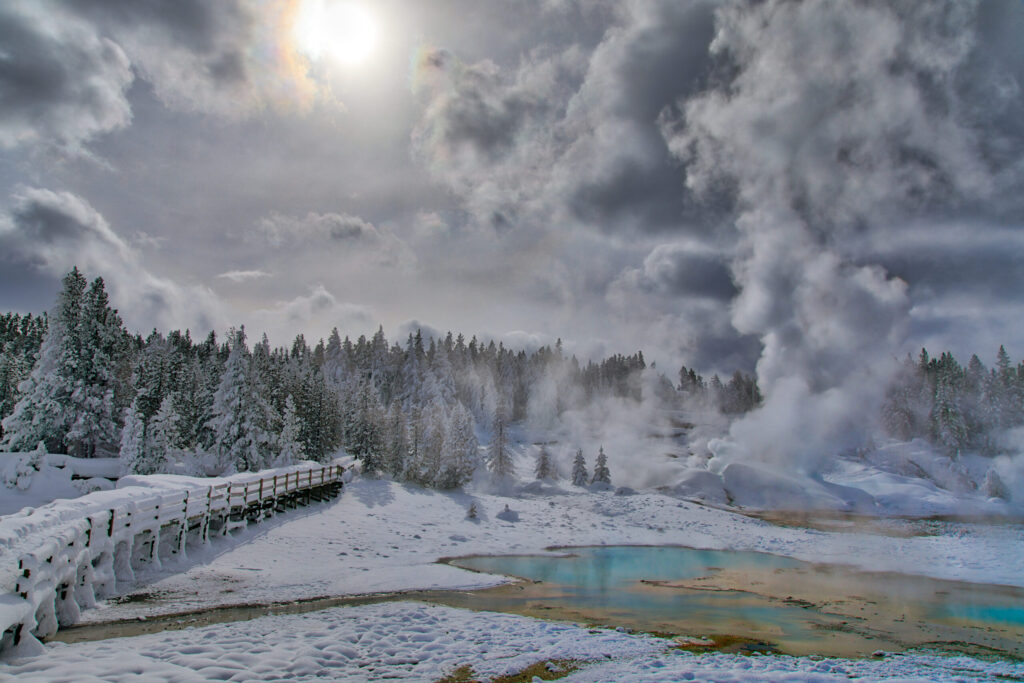
Weather and What to Expect
Winter in Yellowstone is, in a word, cold. We’re talking temperatures that can dip below zero Fahrenheit, especially at night. Snow is abundant, creating a pristine, white landscape that’s truly a sight to behold. You’ll definitely need to bundle up, so think thermal layers, waterproof boots, and plenty of warm accessories like hats and gloves.
Activities
Winter is the season for snow sports! Snowshoeing, cross-country skiing, and snowmobiling are popular activities that allow you to explore the park in a whole new way. Don’t worry if you’re a beginner; there are guided tours and rentals available to get you started.
Wildlife
Believe it or not, some animals are actually more visible in winter. Animals like bison, elk, and wolves have to move more to find food, making them easier to spot against the snowy backdrop. Just remember, winter is a tough season for these creatures, so keep your distance and observe respectfully. However if you plan to see grizzly bears or black bears this is the wrong season since they will be hibernating.
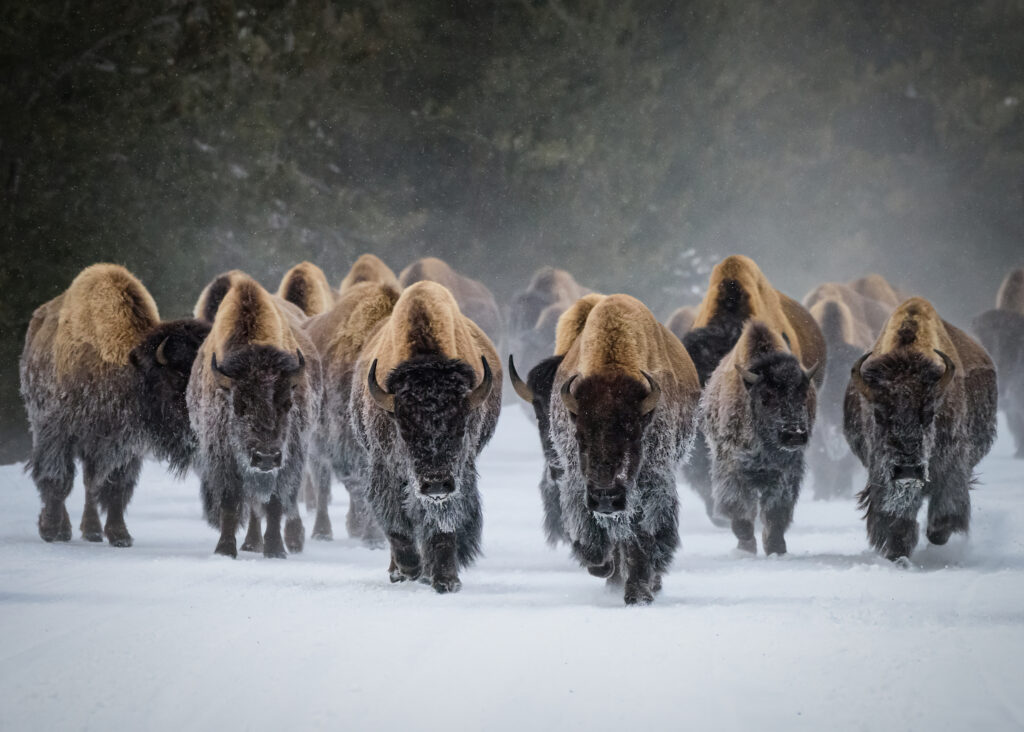
Pros and Cons
Pros
- Fewer visitors make for a tranquil experience.
- The snowy landscape is stunningly beautiful.
- Unique winter activities offer a different way to explore the park.
Cons
- Extremely cold temperatures can be challenging.
- Many facilities and roads are closed, limiting where you can go. The only entrance open year-round to personal vehicles is the north entrance.
- Short days mean you’ll have less daylight for activities.
Winter in Yellowstone is not for the faint of heart, but if you’re up for the challenge, it can be an incredibly rewarding experience. The park’s stark beauty during this season is unparalleled, and there’s something truly special about having this natural wonder all to yourself. Just make sure you’re prepared for the cold and know that you’ll have to work a bit harder to get around. But trust me, the extra effort is well worth it!
What to Consider When Choosing a Time to Visit
So, you’ve heard about what each season in Yellowstone has to offer, but how do you decide when to actually go? It might seem like a simple choice, but there are several factors to consider. Let’s break down some key points that can help you make the best decision for your Yellowstone adventure.
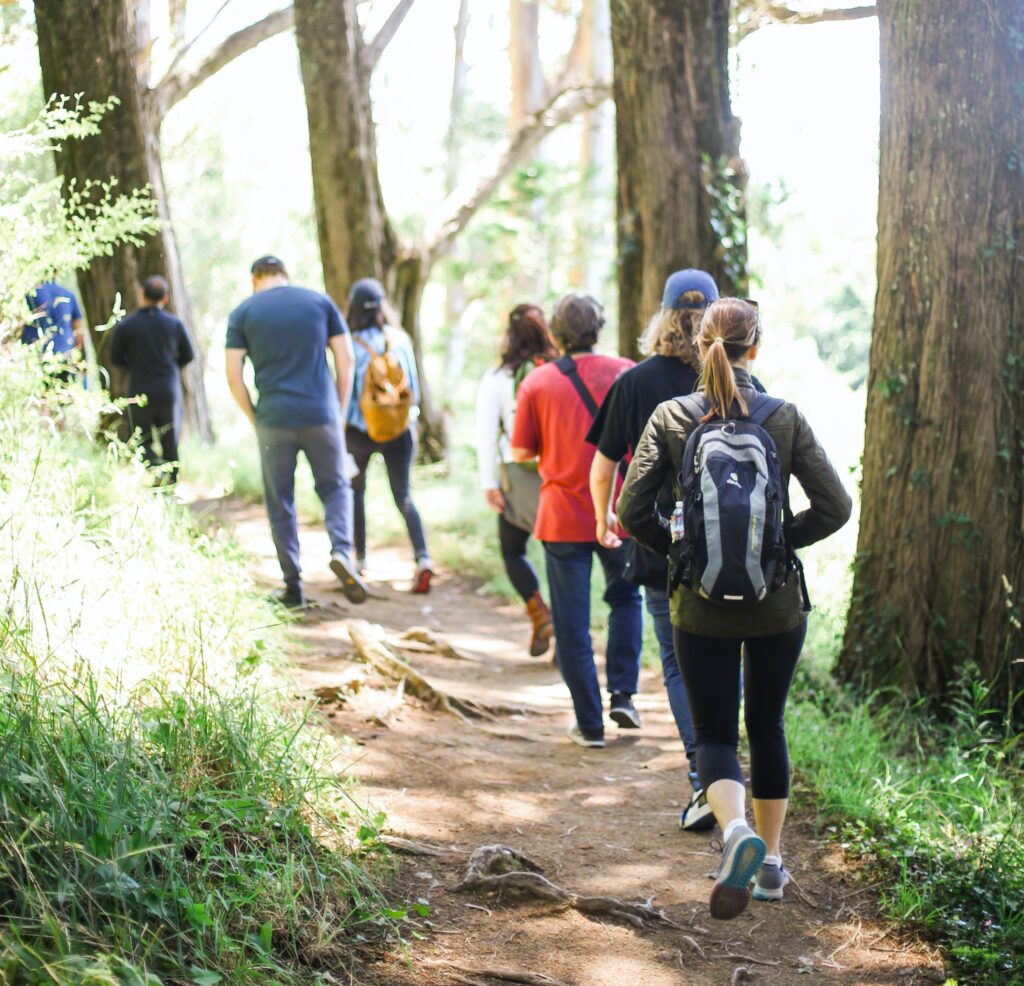
Your Interests
First things first—what do you actually want to do in Yellowstone? If you’re all about hiking and camping, summer might be your best bet when all the trails are open. If you’re a wildlife enthusiast, consider the spring or fall when animals are most active. Winter sports more your thing? Well, winter it is!
Crowds
Nobody likes waiting in long lines or jostling for a good view. If you’re looking to avoid the masses, spring and fall are generally less crowded than summer. Winter is the least crowded, but it also comes with its own set of challenges, like road closures and extreme cold.
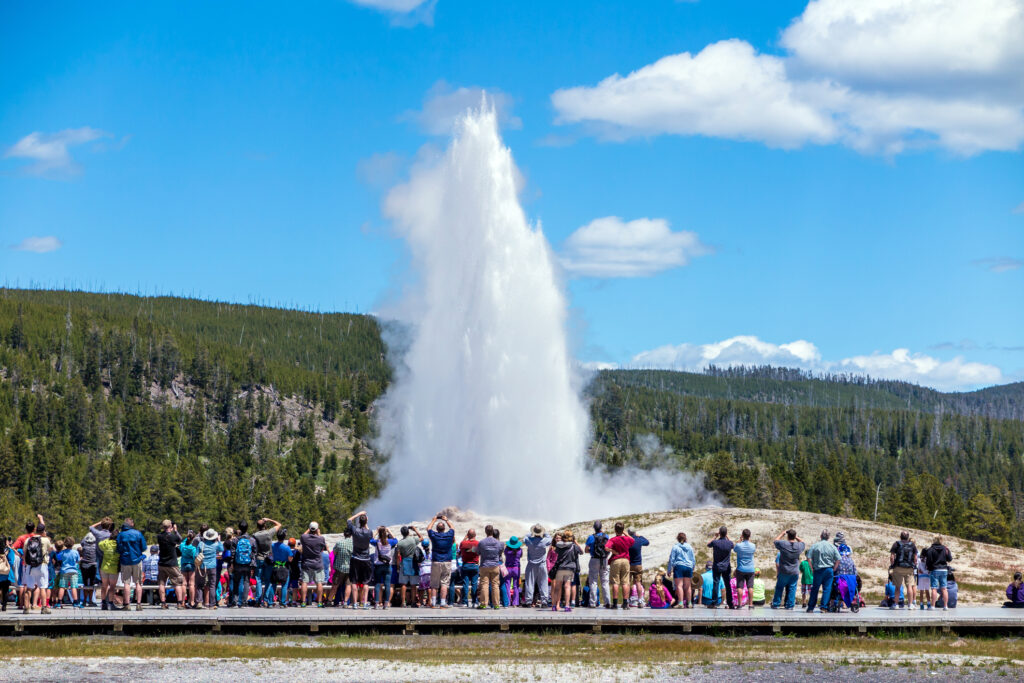
Weather
Weather plays a huge role in how you’ll experience Yellowstone. Each season offers different weather conditions, from warm and sunny to cold and snowy. Make sure you’re comfortable with what each season brings, and prepare accordingly.
Facilities and Services
Keep in mind that not all park services are available year-round. Many visitor centers, campgrounds, and even roads close for the winter season. If full access to the park’s amenities is important to you, plan your trip for when everything is up and running.
Budget
Last but not least, consider your budget. Summer is peak season, so you’ll likely pay more for accommodations and may need to book well in advance. The off-seasons of spring and fall offer a more budget-friendly experience, and winter can be cost-effective if you’re prepared for the conditions.
Choosing when to visit Yellowstone isn’t a one-size-fits-all decision. It really comes down to what you want to get out of your trip. Whether it’s hiking through blooming wildflowers in the spring, enjoying water activities in the summer, capturing the beauty of fall foliage, or taking in the serene snowscapes of winter, each season offers a unique Yellowstone experience. Take some time to weigh the pros and cons, and you’re sure to make a choice that will make your visit unforgettable.
My Recommendations

If you’re new to Yellowstone, I’d say start with a summer visit. Why? Because for me it is the best season overall. The weather’s great, everything’s open—from all the park areas to the concession stands—and there are tons of activities to enjoy. Once you’ve got a few summer trips under your belt, branch out and visit during the shoulder seasons like late spring or early fall. I went in May 2022 and saw more animals than on any of my previous visits. I think it’s because there are fewer people, so the animals aren’t avoiding the busy road areas as much.
Now, there are no guarantees when it comes to spotting wildlife in Yellowstone—except maybe bison and elk. But on that May trip, I got some incredible photos of wolves with just my iPhone! One even ran right in front of our vehicle as we were leaving Mammoth Hot Springs, then trotted up a hill beside the road. Experiences like these are rare; I’d say they’re once or maybe twice in a lifetime moments. The only other times I’ve seen wolves were through a spotting scope when they were miles off in the Lamar Valley.
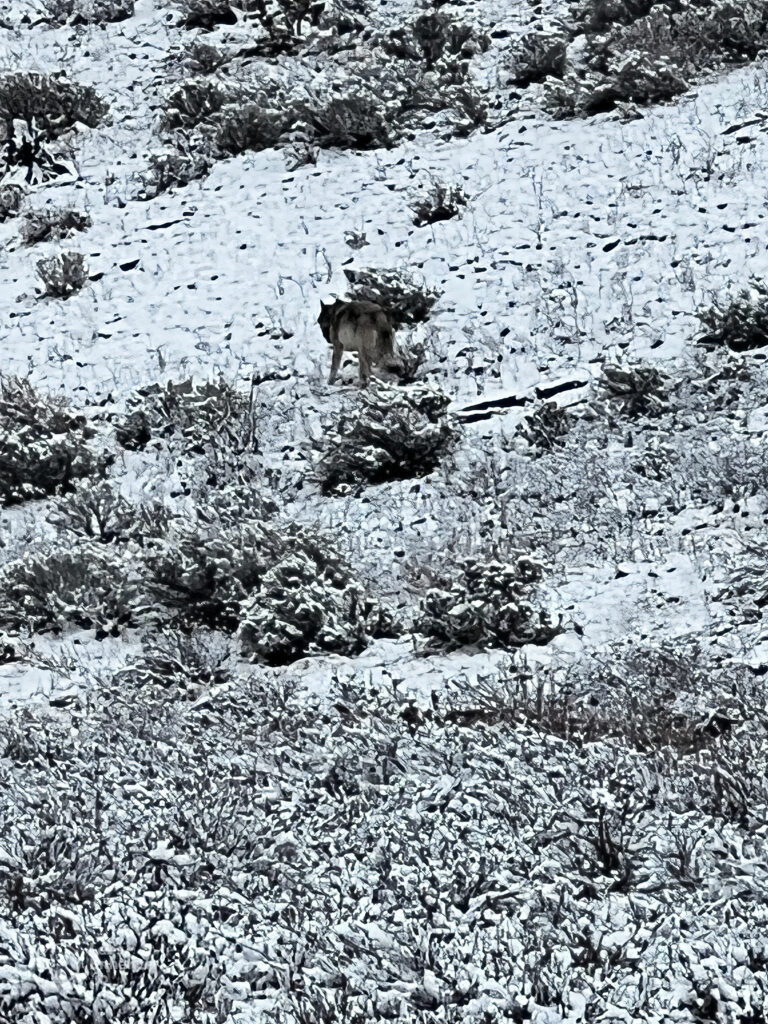
So, if you’re debating when to visit Yellowstone, summer is a safe bet for first-timers. But don’t miss out on the quieter, equally amazing experiences you can have in late spring or early fall.
Read More About Yellowstone
- Morning Glory Pool At Yellowstone National Park
- 35 Best Ways To Save Money In Yellowstone National Park 2023
- Best and Nearest Airports To Yellowstone National Park
- 10 Common Mistakes to Avoid When Visiting Yellowstone National Park
- Bear Safety in Yellowstone: What Every Visitor Needs to Know
- What State Is Yellowstone National Park In?

